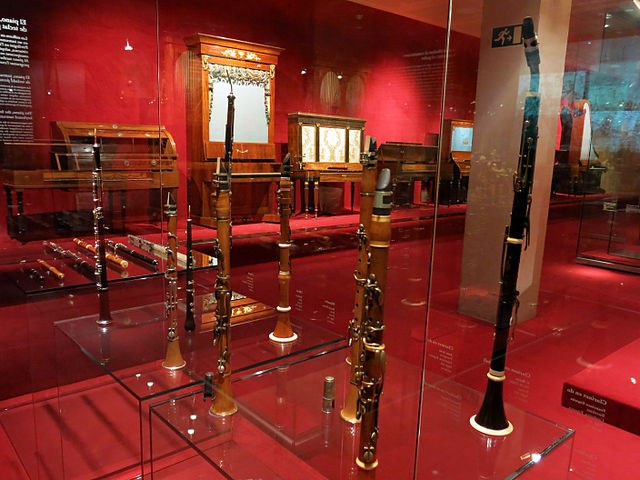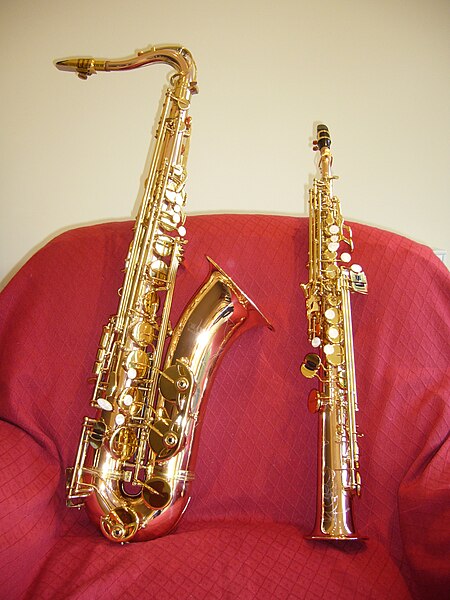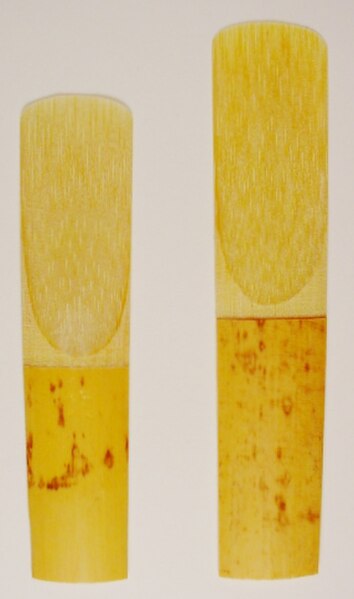The alto clarinet is a woodwind instrument of the clarinet family. It is a transposing instrument pitched in the key of E♭, though instruments in F have been made. In size it lies between the soprano clarinet and the bass clarinet. It bears a greater resemblance to the bass clarinet in that it typically has a straight body, but a curved neck and bell made of metal. All-metal alto clarinets also exist. In appearance it strongly resembles the basset horn, but usually differs in three respects: it is pitched a whole step lower, it lacks an extended lower range, and it has a wider bore than many basset horns.
Alto clarinet BC to low Eb (Boehm system) and Dietz to low C (German system)
Woodwind instruments are a family of musical instruments within the greater category of wind instruments. Common examples include flute, clarinet, oboe, bassoon, and saxophone. There are two main types of woodwind instruments: flutes and reed instruments. The main distinction between these instruments and other wind instruments is the way in which they produce sound. All woodwinds produce sound by splitting the air blown into them on a sharp edge, such as a reed or a fipple. Despite the name, a woodwind may be made of any material, not just wood. Common examples of other materials include brass, silver, cane, and other metals such as gold and platinum. The saxophone, for example, though made of brass, is considered a woodwind because it requires a reed to produce sound. Occasionally, woodwinds are made of earthen materials, especially ocarinas.
Woodwind instruments at the Museu de la Música de Barcelona.
Tenor and soprano saxophones
Alto and tenor saxophone reeds
A piper playing the bagpipes in Newport, Rhode Island





